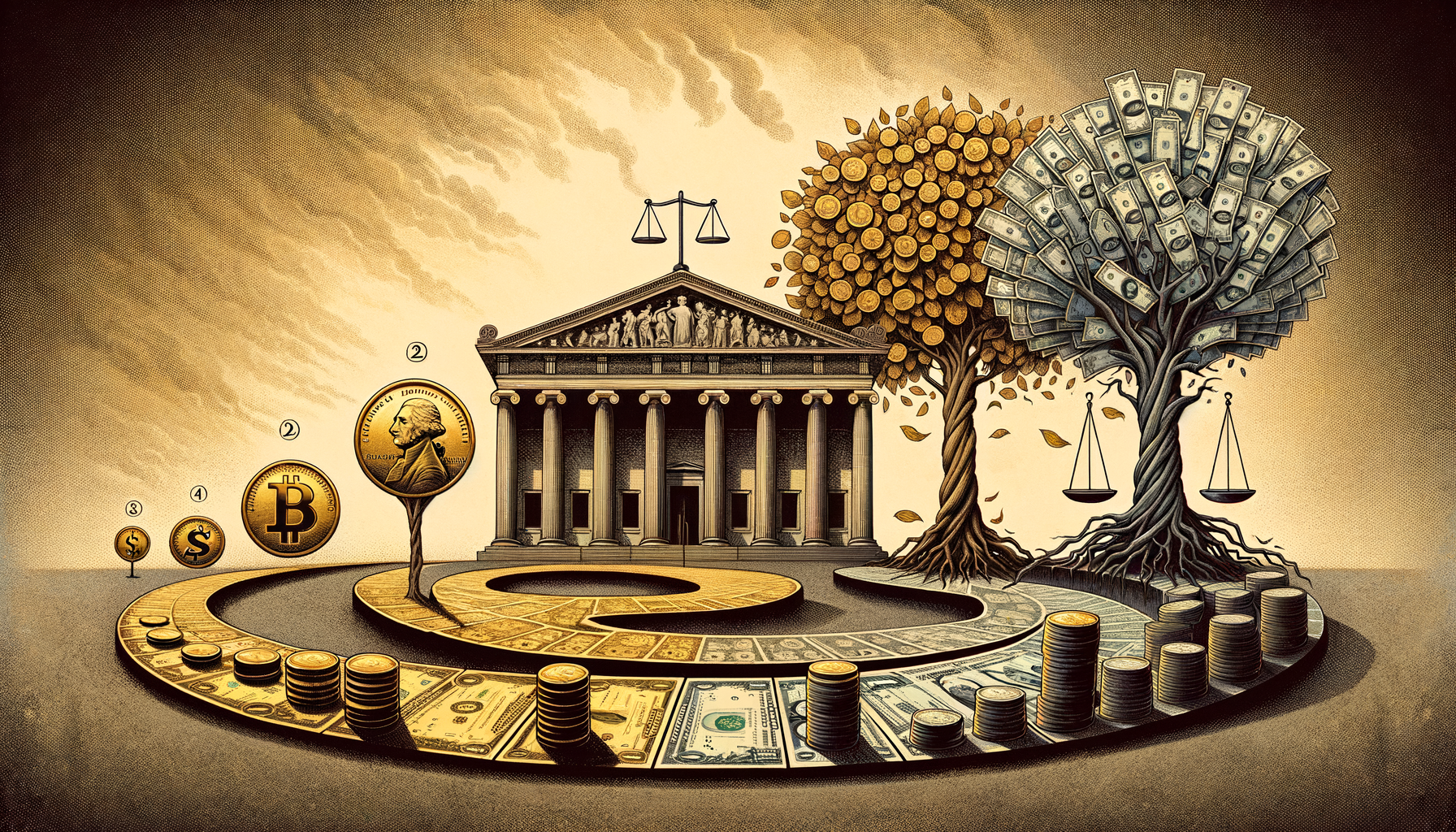“Decoding the Impact of Historical Currency Errors on the Current American Economy”

Understanding the Impact of Past Monetary Missteps on the Current U.S Economy
In analyzing the complexities of the current state of our economy, it becomes crucial to reflect on our past, specifically, the historical monetary policies that may have led us to our present predicament. Understanding these key historical intervals provides an insight into the present financial challenges facing the U.S economy, setting the stage for better strategies and solutions.
One primary factor in understanding America’s ailing economy is the overdependence on the fiat monetary system. Since its inception in 1971, the system has steered the U.S into uncharted economic territories. The crux of this issue is that fiat money, which includes all modern currency, disposes of intrinsic value. To put it simply, a bank note’s value is not inherent but derived from the trust and agreement that it holds value. Unlike gold and silver, which possess tangible value, fiat money is more susceptible to inflation.
A Flashback to the Gold Standard
The shift towards the fiat monetary system culminated from incremental changes over decades, the most notable of these changes being the departure from the gold standard. During the gold standard era, the value of a unit of currency was directly tied to a specific amount of gold. This standard offered a semblance of monetary stability during a volatile era of early industrial expansion.
However, complications arose with economic growth. The limitations of gold production inhibited the desired economic expansion. Therefore, in 1933, President Franklin D. Roosevelt put an end to the gold standard to stimulate spending and spur economic growth during The Great Depression. Currency notes started being issued as IOU’s redeemable in a set amount of gold. This marked the introduction of fractional reserve banking, transforming the function of banks and making credit more readily available.
1913: The Creation of the Federal Reserve
The establishment of the Federal Reserve in 1913 signifies another historical inflection point that continues to influence America’s economic landscape. Given the unprecedented growth of the nation, a central banking system was seen as a necessity to manage the expanding economy. The Federal Reserve, controlling the money supply and dictating interest rates, played a monumental role in America’s economic trajectory.
However, the power vested with the Federal Reserve in controlling interest rates and money supply has raised concern over the years. Critics argue that the Federal Reserve’s policies have contributed to a series of economic bubbles, the repercussions of which have shaken nations globally. It’s argued that The Great Depression of the 1930s and the 2008 financial crisis were ignited and exacerbated by the Federal Reserve’s monetary policies.
2008 Financial Crisis: A Crisis of Confidence
The 2008 financial crisis serves as a poignant illustration of how a lack of trust can shake the financial system’s core. Leading up to the 2008 crisis, banks innocuously bundled mortgages into securities. When these securities failed, trust in the banking system dropped drastically. This loss of confidence highlighted the vulnerability of the fiat money system, which relies on the public’s trust.
Interestingly, Bitcoin emerged around the same time, presenting a revolutionary new form of currency: cryptocurrency, independent of any central authority. This decentralized method of exchange offered an alternative to traditional banking and re-spark the conversation about the nature of money.
Banks, Debt and Money Creation
Contemporary banking plays a significant role in money creation. When a bank issues a loan, it doesn’t take the money from its deposits; instead, it creates new money. This system, known as fractional-reserve banking, means banks can lend out more money than they hold in reserve.
However, this oversupply of money can trigger inflation, decreasing the purchasing power of money. While most Western economies have managed to keep inflation relatively low over the past decades, the potential for hyperinflation and a subsequent crash always looms. High levels of government and corporate debt also pose a risk to the economy’s well-being. Experts express concerns that current debt levels are unsustainable and could usher in a new economic crisis.
Overhauling the Economic Strategy
Faced with these challenges, conversations regarding overhauling the economic strategy are rife in policy circles. Unless a new strategy is embraced, cyclical economic crises become inevitable.
Resurrecting older monetary systems such as the gold standard presents one such strategy. Proponents argue that returning to the gold standard would limit the ability of governments to print money and in turn, control inflation better. However, opponents say a return to the gold standard would restrict economic growth because the money supply would be limited by gold reserves. Whether or not a return to the gold standard is feasible is a matter of heated debate among economists.
The Growing Impact of Cryptocurrency
In the quest for new strategies, cryptocurrencies are increasingly grabbing the spotlight due to their decentralization. Cryptocurrencies like Bitcoin offer a decentralized alternative to the established banking system and the central control of money. In this digital age, crypto technologies could revolutionize exchange methods and possibly offer remedies for the economic malaise.
In conclusion, understanding the historical turning points in our banking and currency system’s evolution reveals a path of economic challenges. Recognizing the influence these decisions have on the state of our present economy, from the dissolution of the gold standard to the role of the Federal Reserve, is instrumental. These insights stem a deeper conversation about the future directions of our economic policy, including exploring new avenues such as cryptocurrencies. By examining the successes and failings of the past, we could reshape a healthier, more resilient economy for the future.
